What are the Benefits of a Professional Mold Inspection?
- A professional mold inspection provides documentation. Mold disclosures are a part of every real estate transaction. A professional, 3rd-party report adds confidence that any issues have been dealt with correctly.
- Professional mold sampling validates suspected mold growth pointed out in a general home inspection.
- A professional mold inspection adds a layer of protection and quality assurance that a mitigation company has performed its work adequately.
- Potential and previous sources of water damage are identified so they can be corrected.
- A well documented mold inspection can help fortify negotiations during real estate transactions by taking out the guess-work and subjectivity.
- Identifying mold and its causes leads to healthier homes and occupants.
Mold Inspection Protocol:

Mold growth in a crawlspace in Bozeman, MT. This was brand new construction.
Developing a Mold Hypothesis
Professional mold mitigation projects or real estate transactions are the most common times for a mold inspection. Here is a quick summary of what takes place during a mold inspection and what the benefits are.
The first thing that happens is a clear conversation between the client and the mold inspector. The information complied during the initial conversation helps the inspector determine the best testing methods. From there, the inspector develops a working hypothesis for the rest of the mold inspection.
For example, a homeowner may not know of any abnormal mold growth in the home. Their allergies may act up in certain areas of the home or they may notice a “musty odor.” Because the nature of mold contamination in this example is unknown, the mold inspection is investigative in nature. In an investigative mold inspection, most of the home will be scrutinized. Possible moisture intrusion points will be the focus as well as any apparent fungal growth.
The mold inspection hypothesis can also be limited if apparent mold growth is already visible. These limited inspections work well in conjunction with professional mold mitigation projects.
Visual Inspection for Mold or Moisture Intrusion
In conjunction with the information compiled in the first conversation, the mold inspector will conduct a thorough visual inspection. Moisture meters and other technical equipment determine if there is any active moisture intrusion contributing to mold growth. Moisture and humidity readings are vital in documenting the overall condition of the home.
The mold inspection is non-invasive and generally limited to what is visible. The mold inspector will make every effort to thoroughly inspect hard to reach areas, especially in attics and crawlspaces. Similar to a general home inspection, mold inspections document current conditions and possible fungal growth of a home. Information gathered during a mold inspection cannot guarantee or predict potential future mold growth.
Collecting Mold Samples
The Mold Inspector collects at least two samples. The first sample collected outside is the baseline for comparison. Additional air samples depend on the specific situation of the home.
When comparing mold samples, the mold inspector is looking for warning signs. Such warning signs may include concentrations of mold spores that are significantly higher than the outdoor sample. The samples are also compared, looking for unique species of mold that shouldn’t be there.
“Swab” or “Tape-lift” samples can be used in conjunction with air quality sampling. These types of samples are used to identify mold growth. Professional mold sampling is the only way to confirm if mold growth is present. Other inspectors or mitigation contractors should use terms like “apparent mold growth” and “possible fungal growth.”
Concluding Mold Inspection Report
An independent lab analyzes the samples and then sends the results to the mold inspector. The inspector then draws reasonable conclusions based on the data collected in the sample reports and the visual inspection. The inspector writes a final report. This report includes observations during the inspection, recommendations for moisture management, or additional protocol for a mitigation company.
Conditions considered for passing results include the following:
- No visible mold growth on building materials.
- Moisture problems have been corrected.
- Sampling confirms that spore counts in affected areas are consistent with outdoor control samples
Limitations of Mold Sampling
Mold sampling methods capture and measure physical mold spores and hyphae (root systems.) Molds also produce gases referred to as mycotoxins. Some people are more sensitive to mycotoxin exposure. Non-invasive sampling methods may not collect mold spores contained within a wall cavity. Hidden mold growth may require more aggressive sampling methods.
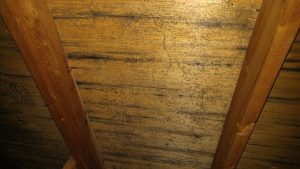
Mold Growth on Sheathing in a Missoula Attic Caused by Improper Ventilation
What Causes Mold in a home? Where is it likely to grow?
Mold has specific conditions that it will thrive in. Spores can also remain dormant until conditions are optimal. Mold needs moisture to survive. Moisture can be from an active leak or prolonged exposure to 60% Relative Humidity or higher. Mold also needs a food source. As mold uses its food source, it begins to break down the materials that it grows on. Mold seems to favor the paper and gypsum found in drywall, Latex paints, OSB Sheathing, and untreated lumber. Mold needs a calm environment to grow. Dark, poorly ventilated areas like attics and crawlspaces are ideal for mold growth. Keeping building materials dry and properly ventilated are the best measures to prevent mold growth.
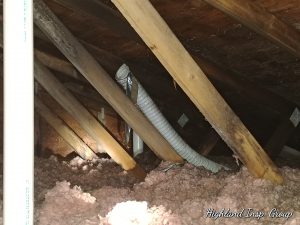
Bathroom vents that terminate in attics can cause mold/fungal growth.
Mold grows well on drywall because of how easily it absorbs moisture. The fibrous cellulose on the paper also makes a great food source. By the time mold is visible on the outside of drywall, the growth on the inner side may be much worse.
Drywall is relatively inexpensive and so it is often cheaper to have affected drywall removed instead of paying a specialist to try and salvage it. OSB sheathing, Floor joists or Attic trusses are more expensive and removing them isn’t practical or possible. A trained mold professional should evaluate mold discovered in an attic, crawlspace, or on porous surfaces
Consulting a Mold Specialist
Not every instance of mold in a home requires a mold specialist. Mold Mitigation jobs are generally classified into 3 different categories:
- Small Mold Mitigation Projects are quantified as covering less than 10 square feet of area. Small projects may include typical fungal growth around a shower or window sills. Regular home maintenance can address most small mold issues.
- Medium Sized Mitigation Projects can cover up to 100 square feet of area. The number of affected types of building materials increases with the size of the project. Common types of materials affected may include drywall, carpet or insulation. Consulting with a mold mitigation specialist or mold inspector may be appropriate here, because cleaning porous materials is more challenging. Cross contamination is also more likely as the size of the project increases.
- Large Mitigation Projects are anything over 100 square feet. Large scale mitigation projects usually include entire crawlspaces, attics, or large portions of a neglected home. High levels of mold contamination within the indoor environment can cause noticeable health effects. Consult with a mold inspector or mitigation specialist.
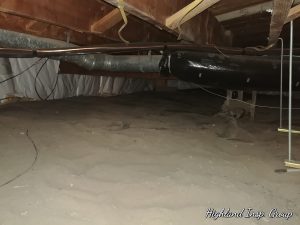
Missing vapor barrier in a crawlspace adds enough humidity to sustain mold growth.
Beware Mitigation Companies that “Self-Certify”
Have a certified post-remediation inspection performed to protect the buyer, seller, Realtors, and the mold mitigating company during a real estate transaction. The inspector will collect samples and have them sent to a lab for analysis. The mold inspector will interpret the information from the lab and determine if remediation was successful.
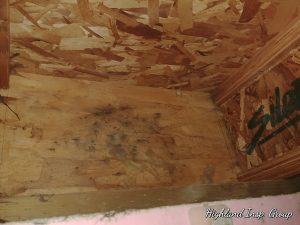
Mold growth from condensation on outer rim joist in a crawlspace
Would You Consider Doing My Mold Removal Project?
Yes. I still perform mold removal on occasion, but prefer to focus on inspections. Most of the mold removal work I do is by referral only. I will never do any work on any home that I have inspected within the last 12 months. I will hire a separate mold inspection company to verify my work. My guarantee is to stick with the project until it passes the mold inspection and is verified via lab analysis.
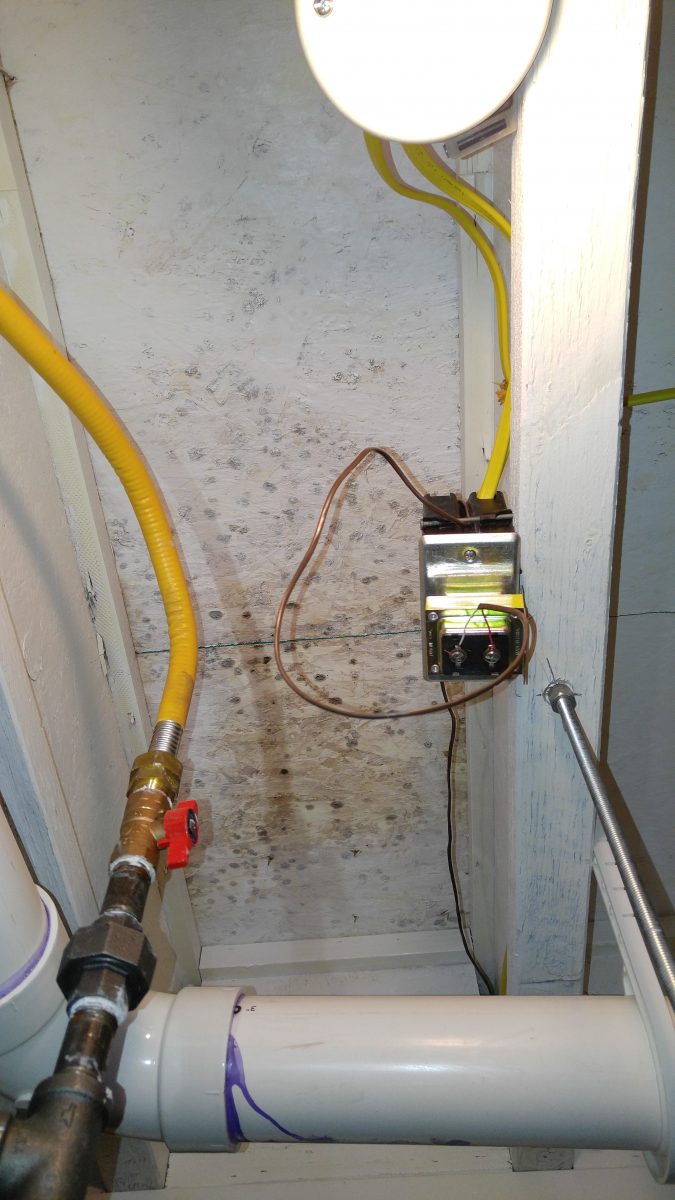
Painting over or “sealing” mold growth is NEVER and approved method of mold mitigation. Mold may eventually grow through it. The first thing any inspector thinks when they see white paint is “what are they trying to hide?”
#BozemanInspector #MissoulaInspector #MoldInspector
